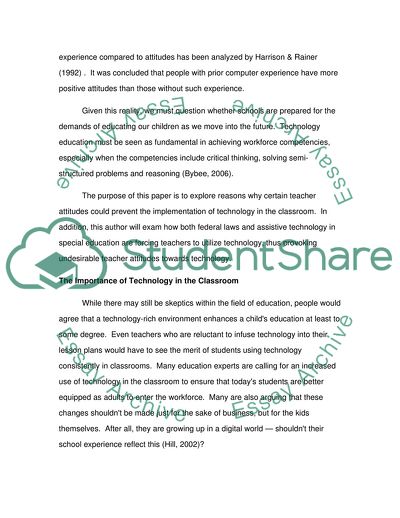Cite this document
(Education: Lack of technology accessibility (internet, hardware), Coursework, n.d.)
Education: Lack of technology accessibility (internet, hardware), Coursework. Retrieved from https://studentshare.org/english/1740937-education-lack-of-technology-accessibility-internet-hardware-technology-training-and-personal-familiarly-with-technology-is-preventing-teachers-to-utilize-technology-in-the-classroom
Education: Lack of technology accessibility (internet, hardware), Coursework. Retrieved from https://studentshare.org/english/1740937-education-lack-of-technology-accessibility-internet-hardware-technology-training-and-personal-familiarly-with-technology-is-preventing-teachers-to-utilize-technology-in-the-classroom
(Education: Lack of Technology Accessibility (internet, hardware), Coursework)
Education: Lack of Technology Accessibility (internet, hardware), Coursework. https://studentshare.org/english/1740937-education-lack-of-technology-accessibility-internet-hardware-technology-training-and-personal-familiarly-with-technology-is-preventing-teachers-to-utilize-technology-in-the-classroom.
Education: Lack of Technology Accessibility (internet, hardware), Coursework. https://studentshare.org/english/1740937-education-lack-of-technology-accessibility-internet-hardware-technology-training-and-personal-familiarly-with-technology-is-preventing-teachers-to-utilize-technology-in-the-classroom.
“Education: Lack of Technology Accessibility (internet, hardware), Coursework”. https://studentshare.org/english/1740937-education-lack-of-technology-accessibility-internet-hardware-technology-training-and-personal-familiarly-with-technology-is-preventing-teachers-to-utilize-technology-in-the-classroom.


